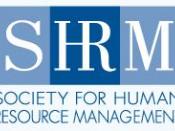INTRODUCTIONUndoubtedly, the workforce forms the backbone of an organization and the department that is responsible for them, is the Human resource Management (HRM). One of the most significant areas that concern HRM, is rewarding and motivating systems. Rewarding systems seem to have a direct impact on productivity of a business, which makes that topic very challenging for us. The following report carries a discussion around the theory regarding rewarding systems and especially Performance-Related Pay (PRP) as a motivator and its implementation on the organizations. This is followed by an investigation into two empirical articles referring to the topics above and their critically evaluation.
THEORETICAL FRAMEWORK1. REWARDRewarding comprises one of the most significant functions of HRM department in any business, as it is indisputably linked to the employees' performance and by extension to the business' productivity and output. Therefore, its main objective is the maximization of employees' performance through their motivation.
Reward can be defined simply as a way of compensating employees according to their performance and it is based on the company's culture, strategies, philosophies, policies and processes. (Armstrong, 2002; Lewis, 2006) In addition, due to the diverse nature and uniqueness of individuals and their perceptions, HR managers have to take demographics into consideration, i.e. educational levels, age, gender etc, before applying a reward system (Bau & Dowling, 2007)Reward can be basically segregated into financial and non-financial elements, which are demonstrated in Figure 1.
REWARDFINANCIAL REWARD PROCESSBase PayShare ownershipEmployee BenefitsVariable PayIndividual performance related paybonusesincentivescommissionservice-related paycompetence-related paycontribution-related payskill-based paycareer development payNON-FINANCIAL REWARD PROCESSRecognitionOpportunity to develop skillsCareer opportunitiesQuality of working life(Armstrong & Brown, 2001; Marchington & Wilkinson, 20022. Performance-Related PayOne of the most newly adopted but widespread type of financial incentives is the Performance-Related Pay. It was adopted during the early 1990s, primarily by organizations in the USA and UK,


